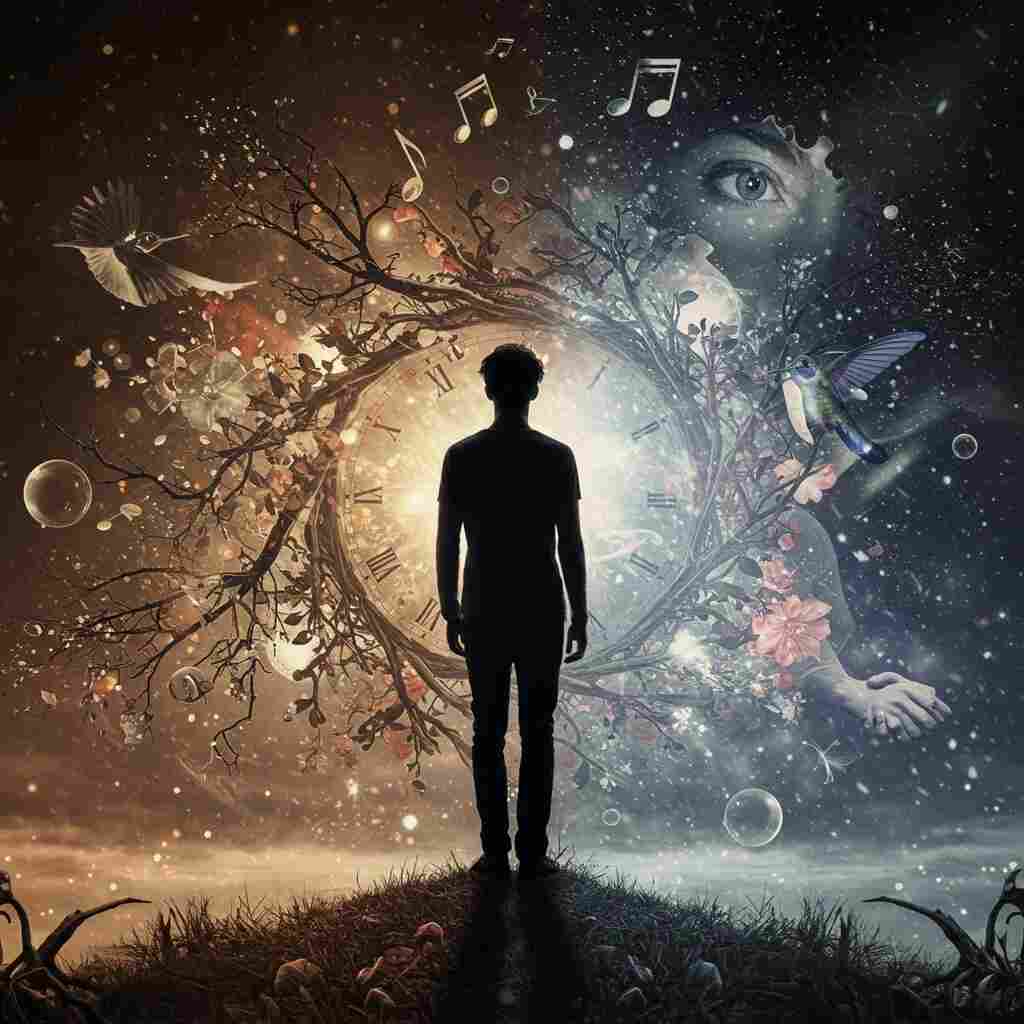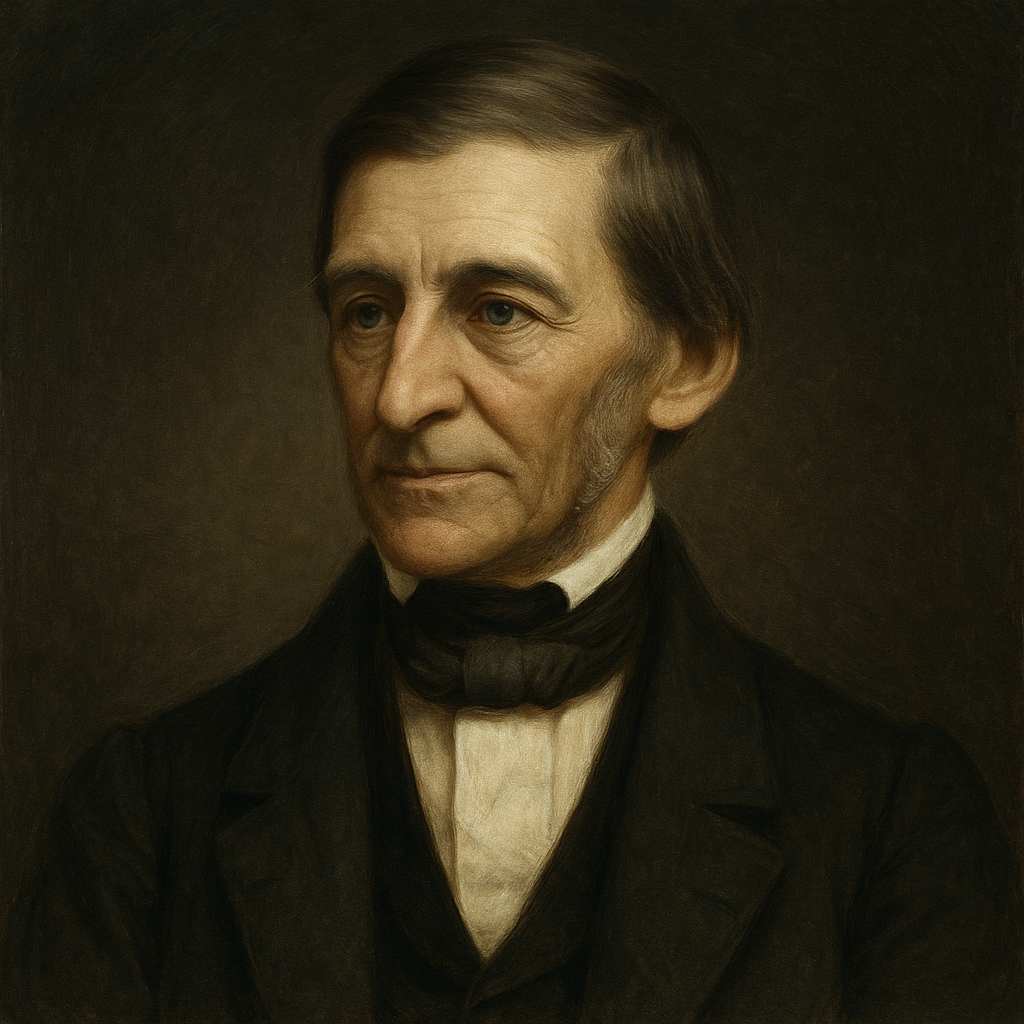Culture
Ralph Waldo Emerson
1803 to 1882

Can rules or tutors educate
The semigod whom we await?
He must be musical,
Tremulous, impressional,
Alive to gentle influence
Of landscape and of sky,
And tender to the spirit-touch
Of man's or maiden's eye:
But, to his native centre fast,
Shall into Future fuse the Past,
And the world's flowing fates in his own mould recast.
Ralph Waldo Emerson's Culture
Ralph Waldo Emerson, a central figure in the American Transcendentalist movement, penned "Culture" as a meditation on the ideal of human development and the cultivation of the self. The poem, though brief, encapsulates Emerson’s philosophical vision of the individual’s relationship to nature, society, and the divine. It reflects his belief in the inherent potential of the human spirit to transcend the limitations of conventional education and societal norms, aspiring instead to a higher, almost divine state of being. Through its rich imagery, philosophical depth, and lyrical tone, "Culture" invites readers to consider the transformative power of inner growth and the harmonious integration of the self with the universe.
Historical and Cultural Context
To fully appreciate "Culture," it is essential to situate it within the broader context of Emerson’s life and the Transcendentalist movement of the mid-19th century. Transcendentalism emerged as a reaction against the rigid rationalism of the Enlightenment and the dogmatic structures of organized religion. It emphasized intuition, individualism, and the inherent goodness of both humanity and nature. Emerson, as one of its foremost proponents, sought to redefine the relationship between the self and the world, advocating for a spiritual and intellectual awakening that would liberate individuals from societal constraints.
The mid-19th century was also a period of rapid industrialization and social change in America. The rise of urbanization and technological progress brought with it a sense of alienation and a growing disconnect from the natural world. Emerson’s writings, including "Culture," can be seen as a response to this cultural moment, offering a vision of human development that prioritizes inner harmony and a deep connection to the natural and spiritual realms. The poem’s focus on the “semigod” figure reflects Emerson’s belief in the divinity of the individual and the potential for each person to achieve a higher state of being through self-cultivation.
Themes and Philosophical Underpinnings
At its core, "Culture" explores the theme of human potential and the process of self-realization. The poem presents an idealized vision of the individual as a “semigod,” a being who transcends the ordinary limitations of humanity through a profound connection to nature, art, and the spiritual essence of existence. This figure is not merely educated by “rules or tutors” but is instead shaped by a sensitivity to the world’s beauty and a responsiveness to the subtle influences of the environment.
The poem also grapples with the tension between individuality and universality. The “semigod” is described as being “to his native centre fast,” suggesting a firm grounding in the self, yet this self is not isolated or self-centered. Instead, it is deeply connected to the broader currents of existence, capable of fusing “the Past” with the “Future” and recasting “the world’s flowing fates” in its own mold. This duality reflects Emerson’s belief in the interconnectedness of all things and the idea that true self-cultivation leads not to egotism but to a harmonious alignment with the universal order.
Another key theme is the transformative power of culture, understood not as the accumulation of knowledge or social refinement but as the cultivation of the soul. Emerson’s vision of culture is deeply spiritual and aesthetic, emphasizing the importance of being “musical,” “tremulous,” and “impressional.” These qualities suggest a receptivity to the world’s beauty and a capacity for emotional and intellectual growth. The poem implies that true culture is not imposed from without but arises from within, as the individual responds to the gentle influences of nature and human connection.
Literary Devices and Imagery
Emerson employs a range of literary devices to convey the poem’s themes and evoke its emotional resonance. The use of imagery is particularly striking, as it draws on the natural world to illustrate the process of self-cultivation. The “landscape and of sky” symbolize the vastness and beauty of the external world, while the “spirit-touch / Of man’s or maiden’s eye” suggests the intimate and transformative power of human connection. These images create a sense of harmony and balance, reflecting the poem’s vision of the individual as both grounded in the self and attuned to the broader universe.
The poem’s language is also highly musical, mirroring its emphasis on the aesthetic dimension of culture. Words like “musical,” “tremulous,” and “flowing” evoke a sense of rhythm and fluidity, suggesting the dynamic and ever-evolving nature of the self. The use of alliteration, as in “tender to the spirit-touch,” further enhances the poem’s lyrical quality, drawing attention to the delicate and impressionable nature of the “semigod.”
Emerson’s use of paradox is another notable feature of the poem. The “semigod” is both “to his native centre fast” and capable of recasting “the world’s flowing fates,” embodying a tension between stability and transformation. This paradox reflects Emerson’s belief in the coexistence of individuality and universality, as well as his vision of the self as both rooted and expansive.
Emotional Impact and Universal Appeal
One of the most compelling aspects of "Culture" is its ability to resonate with readers on an emotional level. The poem’s vision of the “semigod” as a figure of beauty, sensitivity, and transformative power is deeply inspiring, offering a sense of hope and possibility. It speaks to the universal human desire for growth and self-realization, as well as the longing for a deeper connection to the world and to others.
At the same time, the poem’s emphasis on the gentle and impressionable nature of the “semigod” invites a sense of vulnerability and humility. The figure is not portrayed as a domineering or authoritarian presence but as one who is “alive to gentle influence” and “tender to the spirit-touch.” This portrayal challenges traditional notions of power and greatness, suggesting that true strength lies in openness and receptivity.
The poem’s emotional impact is further enhanced by its brevity and simplicity. In just a few lines, Emerson captures a profound and expansive vision of human potential, leaving readers with a sense of awe and wonder. The poem’s lyrical quality and evocative imagery make it accessible and engaging, while its philosophical depth invites repeated reflection and contemplation.
Conclusion: A Vision of Human Flourishing
Ralph Waldo Emerson’s "Culture" is a masterful exploration of the ideals of self-cultivation and human potential. Through its rich imagery, musical language, and philosophical depth, the poem presents a vision of the individual as a “semigod,” capable of transcending the limitations of conventional education and societal norms to achieve a higher state of being. It emphasizes the importance of sensitivity, receptivity, and a deep connection to nature and humanity, offering a compelling alternative to the materialism and alienation of modern life.
In its celebration of the transformative power of culture, "Culture" speaks to the enduring human desire for growth, beauty, and meaning. It invites readers to consider the ways in which they might cultivate their own inner lives and align themselves with the broader currents of existence. As a work of art, it exemplifies the power of poetry to inspire, challenge, and uplift, reminding us of the profound connection between the individual and the universe. In this way, "Culture" stands as a testament to Emerson’s enduring legacy as a poet and philosopher, offering a timeless vision of human flourishing and the boundless potential of the human spirit.
This text was generated by AI and is for reference only. Learn more
Want to join the discussion? Reopen or create a unique username to comment. No personal details required!



Comments
No comments yet. Be the first to comment!